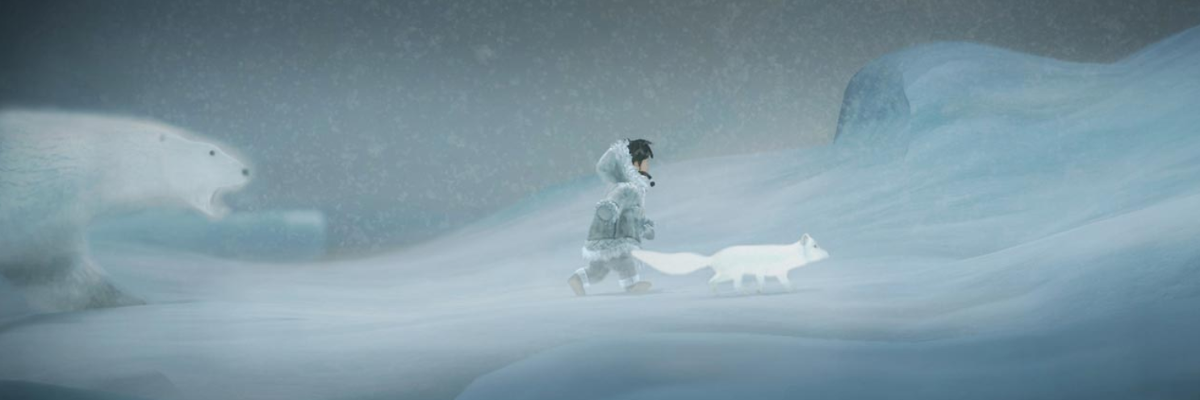We have never seen a game like Never Alone. With stunning graphics and great music, it’s easy to look at, and fun to play. The game also easily fits into one of the Sustainable Development Goals.
Never Alone (also known as ‘Kisima Ingitchuna’) is probably first and only game with native Alaskan main character. Nuna is little Iñupiaq girl who, with her Arctic fox companion embarks on a mission. She tries to save her people from eternal blizzard, while players learn about her community’s stories and customs.
The idea of the game itself was born in Alaska.
Cook Inlet Tribal Council (CITC) , a non-profit organization “built upon values rooted in Alaska Native cultures” presented the idea of creating a new game. It was a result of discussion about new ways to reach out to the new generations of native Alaskan in an attempt to preserve ethnic traditions. According to Eric March from the Upworthy:
The council saw Never Alone as both a way of becoming more financially self-sufficient and a necessary new method of transferring cultural knowledge from one generation to the next.

With that in mind, CITC with E-Line started off by looking at how mainstream games portrayed ethnicity:
The group found that not only were native video game characters exceedingly rare, but when they did appear, it was often as sidekicks exhibiting a mishmash of cultural signifiers cobbled together from various and unrelated communities or, worse, as one-dimensional villains.
It turned out that gaming industry never really paid close attention to the fitting portrayal of the natives.
As opposed to that, Upper One Games focused on accurately representing the Alaskan culture.
In addition to the main game, Never Alone features hours of documentary footage of Alaska Native elders and community members sharing traditional stories, explaining customs, and passing down knowledge.
Even though developers were afraid that this might somehow hinder the gameplay, it only added to the purposefulness and complexity.
To “strengthen efforts to protect and safeguard the world’s cultural and natural heritage” is one of the targets of SDG number 11 – Cities. And not without a reason.
Ethnicity and diverse culture are connected to many aspects of our life. In the past, it was often traditions that kept progress and our connections to nature in balance. Intensive urbanization is among causes of traditional communities being on the verge of the extinction.
Of course, we cannot demonize the progress. It drastically improved our life standards throughout the centuries and is necessary to keep humankind afloat. But preserving the ethnicity and diverse culture might be important for keeping the Earth in balance.
Even if you don’t find innuitian culture interesting, Never Alone will remind you of the beauty and importance of ethnicity, and nature. Maybe it can help people live more sustainable life?





